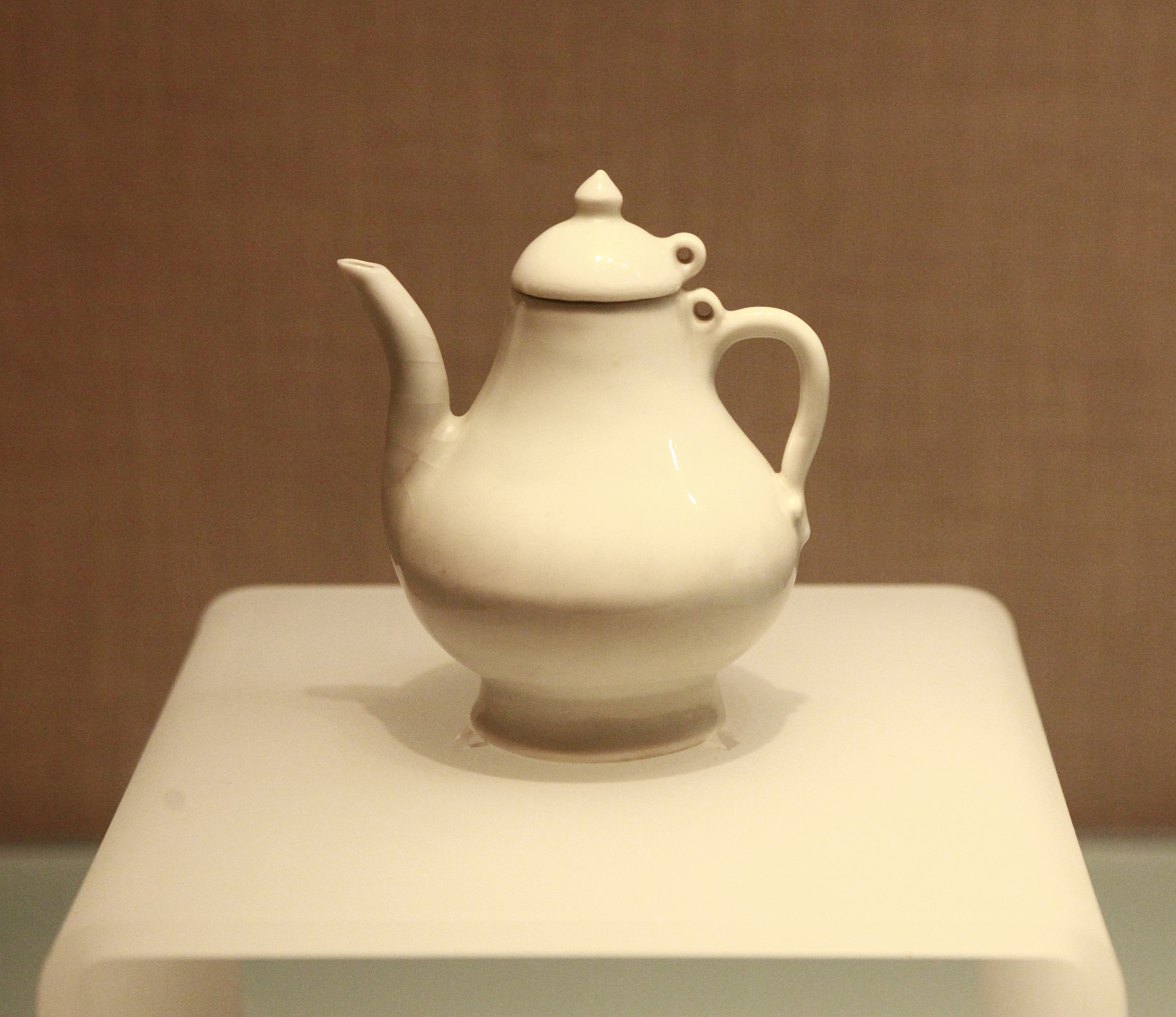
The sweet white pear-shaped bottle made from Jingdezhen kiln. (PHOTO: VCG)
By?ZONG?Shihan
Yongle porcelain, also called sweet white porcelain, was produced during the Ming Dynasty's Yongle period (1403-1424), and features a special glaze giving a smooth and creamy appearance. This kind of porcelain was described in ancient times as "white like congealed fat, immaculate like piled-up snow," denoting the highest level of ancient Chinese white porcelain.
The earliest white porcelain emerged during the Northern and Southern Dynasties(420-589). With the advancement of raw materials selection and purification techniques, white porcelain reached its peak in the Ming Dynasty, creating the Yongle sweet white porcelain.
In terms of raw materials, the sweet white porcelain was primarily made of porcelain stone, supplemented by kaolin clay, which had the advantage of good plasticity and high stability during firing, making it easy to produce an eggshell porcelain. In terms of purification, craftsmen reduced the content of calcium and iron in the glaze, and increased the content of potassium to enhance the whiteness and transparency of the porcelain.
The unique feature of the sweet white porcelain is that it has reached a form of semi-bodiless ware with paper-thin texture,leaving only a thin body and a layer of transparent glaze. The production process of the semi-bodiless ware is extremely strict, with one less cut resulting in too thick and one more cut resulting in being discarded.
The sweet white porcelain is most commonly seen in the form of bowls, dishes, small pots, high feet goblets, and plum bottles. Many designs also draw inspiration from foreign cultural elements as China had frequent cultural and trade exchanges with Europe and other Asian countries in the early Ming Dynasty. Based on the extensive absorption of Western pottery, silverware, enamelware and other elements, the innovative design of the sweet white porcelain made it more beautiful and unparalleled, becoming the peak of the white porcelain.
The trio will conduct a series of experiments in fields such as life science, fluid physics, combustion science and materials science. Notably, this is the first time that fruit flies have been taken on a Chinese space mission as experimental subjects. What made scientists choose fruit flies? What experiment will they undergo?
